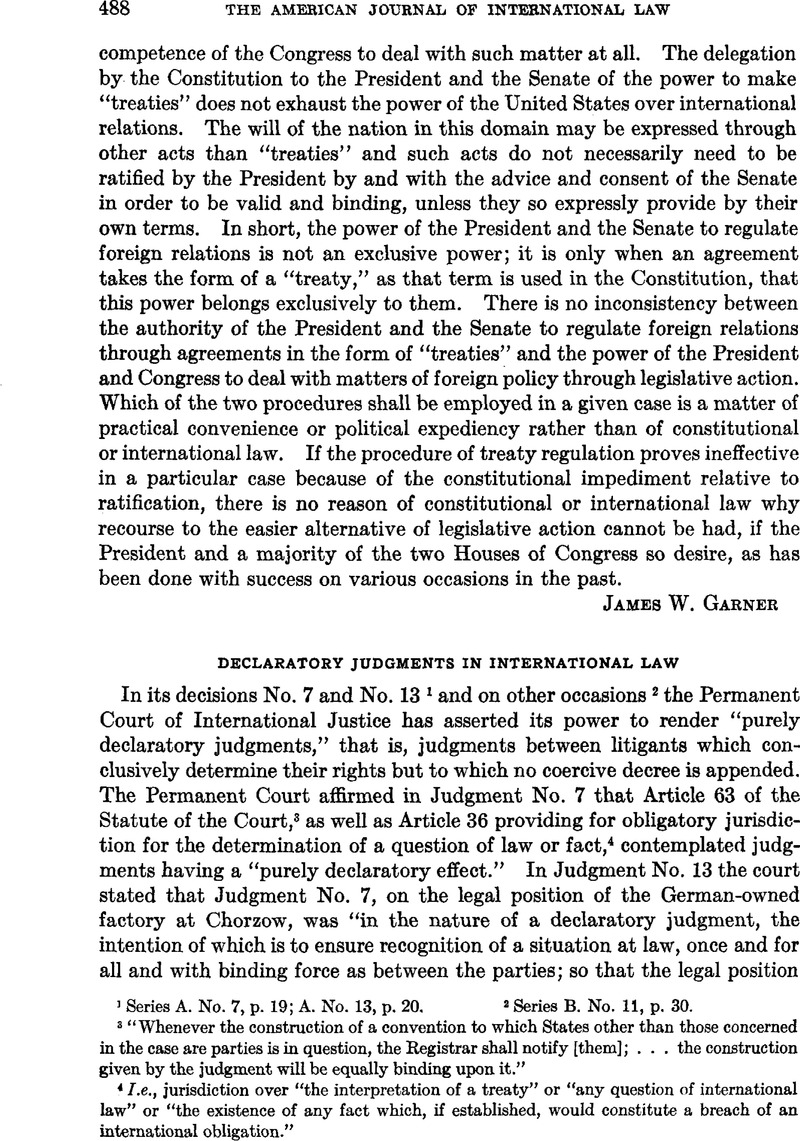Published online by Cambridge University Press: 12 April 2017

1 Series A. No. 7, p . 19; A. No. 13, p . 20.
2 Series B. No. 11, p . 30.
3 “Whenever the construction of a convention to which States other than those concerned in the case are parties is in question, the Registrar shall notify [them]; … the construction given by the judgment will be equally binding upon it.“
4 I.e., jurisdiction over “the interpretation of a treaty” or “any question of international law” or “the existence of any fact which, if established, would constitute a breach of an international obligation.“
5 See Hess v. Country Club Park, 213 Cal. 613, 2 Pac. (2d) 782 (1931); Great Britain, Law Of Property Act, 1925, 15 Geo. V, C. 20, sec. 84; and Borchard, Declaratory Judgments (Cleveland, 1934), pp. 325-329.
6 Ertel Bieber & Co. v. Rio Tinto Co. (C. A.) [1918] A. C. 260; Zinc Corp.v. Hersch (C. A.) [1916] 1 K. B. 541; Hugh Stevenson & Sons v. Akt. für Cartonnagen-Industrie (H. L.) [1918] A. C. 239. Borchard, op. cit , 319.